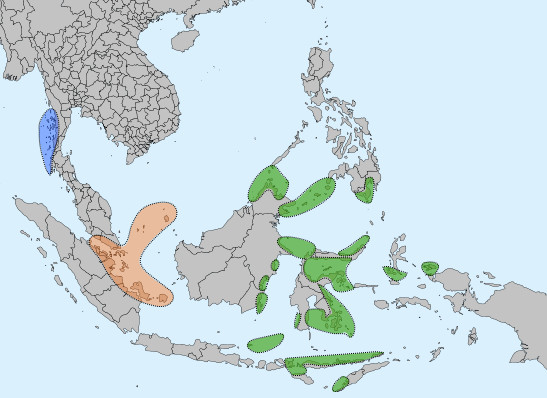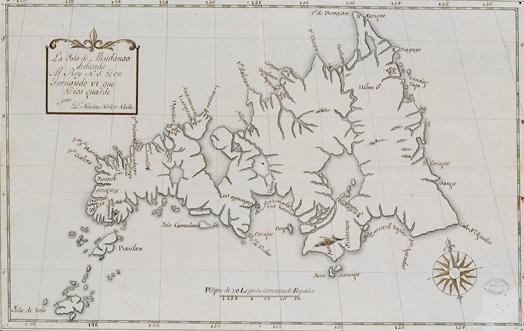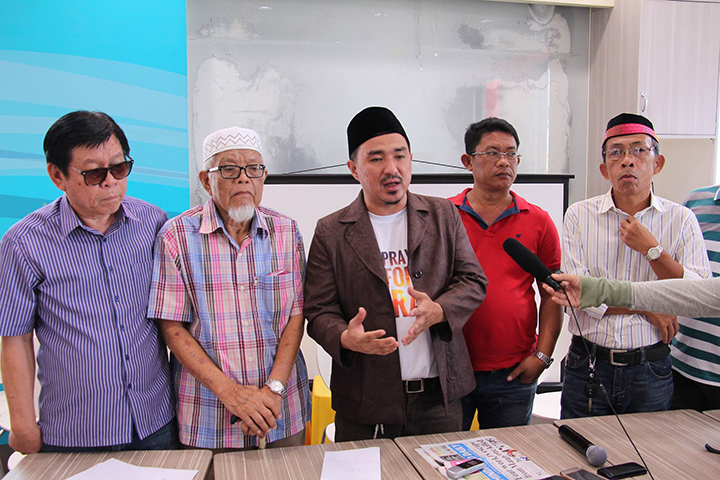|
Okir
Okir, also spelled okil or ukkil, is the term for rectilinear and curvilinear plant-based designs and folk motifs that can be usually found among the Moro and Lumad people of the Southern Philippines, as well as parts of Sabah. It is particularly associated with the artwork of the Maranao and Sama (Badjao) tribes, although it can also be found to a lesser extent among the Maguindanao, Iranun, Tausug, Yakan, and Lumad groups. The design elements vary among these ethnic groups, with the greatest refinement being found among the Maranao. History The origins of ''okir'' are pre-Islamic. They are believed to have originated from the much earlier ''okil'' or ''okil-okil'' decorative carving traditions of the Sama (Badjao) people, which are often highly individualistic and rectilinear. The Sama are master carvers, and they made lavish decorations on ritual animistic objects, grave markers (both in wood and stone), and their houseboats. These precursor forms of the ''okir'' d ... [...More Info...] [...Related Items...] OR: [Wikipedia] [Google] [Baidu] |
Maranao People
The Maranao people (Maranao language, Maranao: ''Bangsa'' ''Mëranaw''; Filipino language, Filipino: ''mga'' ''Maranaw''), also spelled Meranaw, Maranaw, and Mëranaw, is a predominantly Muslim Filipino people, Filipino ethnic groups of the Philippines, ethnic group native to the region around Lanao Lake in the island of Mindanao. They are known for their artwork, weaving, wood, plastic and metal crafts and epic literature, the Darangen. They are ethnically and culturally closely related to the Iranun people and Maguindanao people, all three groups being denoted speaking Danao languages and giving name to the island of Mindanao. They are grouped with other Moro people due to their shared religion. Etymology The name "Maranao" (also spelled "Mëranaw", or "Maranaw") means "people of the lake" (''lanaw'' or ''ranaw'', Archaism, archaic ''danaw'', means "lake" in the Maranao language). This is in reference to Lake Lanao, the predominant geographic feature of the ancestral hom ... [...More Info...] [...Related Items...] OR: [Wikipedia] [Google] [Baidu] |
Sama-Bajau People
The Sama-Bajau include several Austronesian people, Austronesian ethnic groups of Maritime Southeast Asia. The name collectively refers to related people who usually call themselves the Sama or Samah (formally A'a Sama, "Sama people"); or are known by the Exonym and endonym, exonym Bajau (, also spelled Badjao, Bajaw, Badjau, Badjaw, Bajo or Bayao). They usually live a seaborne lifestyle and use small wooden sailing vessels such as the ''perahu'' (''layag'' in Maranao language, Maranao), ''djenging'' (''balutu''), ''lepa (ship), lepa'', and ''vinta'' (''pilang''). They also use medium-sized vessels like the ''Junkung, jungkung'', ''timbawan'' and small fishing vessels like ''biduk'' and ''Bangka (boat), bogo-katik''. Some Sama-Bajau groups native to Sabah are also known for their traditional horse culture. The Sama-Bajau are the dominant ethnic group of the islands of Tawi-Tawi. They are also found in other islands of the Sulu Archipelago, coastal areas of Mindanao and other i ... [...More Info...] [...Related Items...] OR: [Wikipedia] [Google] [Baidu] |
Sama-Bajau
The Sama-Bajau include several Austronesian ethnic groups of Maritime Southeast Asia. The name collectively refers to related people who usually call themselves the Sama or Samah (formally A'a Sama, "Sama people"); or are known by the exonym Bajau (, also spelled Badjao, Bajaw, Badjau, Badjaw, Bajo or Bayao). They usually live a seaborne lifestyle and use small wooden sailing vessels such as the '' perahu'' (''layag'' in Maranao), ''djenging'' (''balutu''), '' lepa'', and '' vinta'' (''pilang''). They also use medium-sized vessels like the '' jungkung'', ''timbawan'' and small fishing vessels like ''biduk'' and '' bogo-katik''. Some Sama-Bajau groups native to Sabah are also known for their traditional horse culture. The Sama-Bajau are the dominant ethnic group of the islands of Tawi-Tawi. They are also found in other islands of the Sulu Archipelago, coastal areas of Mindanao and other islands in the southern Philippines; as well as northern and eastern Borneo, Sulawesi, an ... [...More Info...] [...Related Items...] OR: [Wikipedia] [Google] [Baidu] |
Maguindanao People
The Maguindanaon people are an Austronesian ethnic group from the Philippines. The Maguindanaon are part of wider political identity of Muslims known as Moro, who constitute the third largest ethnic group of Mindanao, Sulu and Palawan. The Maguindanaons constitute the ninth largest Filipino ethnic group and are known for being distinguished in the realm of visual art. They have been renowned as metalworkers, producing the wavy-bladed keris ceremonial swords and other weapons, as well as gongs. The Maguindanaons historically had an independent sultanate known as the Sultanate of Maguindanao which comprises modern day Maguindanao del Norte, Maguindanao del Sur, Zamboanga Peninsula, Davao Region and Soccsksargen. The name "Maguindanao/Magindanaw" itself was corrupted by Spanish sources into "Mindanao", which became the name for the entire island of Mindanao. Etymology The word ''Maguindanao or Magindanaw'' means "people of the flood plains", from the word ''Magi'inged'' that m ... [...More Info...] [...Related Items...] OR: [Wikipedia] [Google] [Baidu] |
Visayan People
Visayans (Cebuano language, Cebuano: ''mga Bisayà'' ) are a Ethnic groups in the Philippines, Philippine ethnolinguistic family group or metaethnicity native to the Visayas, to the southernmost islands south of Luzon, and to a significant portion of Mindanao. They are composed of numerous distinct ethnic groups. When taken as a single group, they number around 33.5 million. The Visayans, like the Luzon Lowlanders (Tagalogs, Bicolanos, Ilocanos, etc.) were originally predominantly Philippine mythology, animist-polytheists and broadly share a maritime culture until the 16th century when the Spanish Empire enforced Catholic Church in the Philippines, Catholicism as the state religion. In more inland or otherwise secluded areas, ancient animistic-polytheistic beliefs and traditions either were Folk Catholicism, reinterpreted within a Roman Catholic Dogma in the Catholic Church, framework or syncretized with the new religion. Visayans are generally speakers of one or more of the dis ... [...More Info...] [...Related Items...] OR: [Wikipedia] [Google] [Baidu] |
Bakunawa
The Bakunawa, also called the Philippine moon-eating dragon, the Philippine moon dragon, moon dragon, or the moon-eating dragon, is a serpent, that looks like a Dragon in Philippine mythology. It is believed to be the cause of eclipses, earthquakes, rains, and wind. The movements of the Bakunawa served as a geomantic calendar system for ancient Filipinos and were part of the rituals of the '' babaylan'' priestess. It is usually depicted with a characteristic looped tail and a single horn on the nose. It was believed to inhabit either the sky or the underworld. Due to increasing trade contacts with South Asia and the Indianization of Southeast Asia, the Bakunawa later became syncretized with the Nāga, Rahu, and Ketu of Hindu- Buddhist mythology. Etymology Bakunawa is believed to be originally a compound word meaning "bent snake", from Proto-Western-Malayo-Polynesian ''*ba(ŋ)kuq'' ("bent", "curved") and ''*sawa'' ("large snake", "python"). Spelling variants include Vako ... [...More Info...] [...Related Items...] OR: [Wikipedia] [Google] [Baidu] |
Paan
Betel nut chewing, also called betel quid chewing or areca nut chewing, is a practice in which areca nuts (also called "betel nuts") are chewed together with slaked lime and betel leaves for their stimulant and narcotic effects, the primary psychoactive compound being arecoline. The practice is widespread in Southeast Asia, Micronesia, Island Melanesia, and South Asia. It is also found among both Han Chinese immigrants and indigenous peoples of Taiwan, Madagascar, and parts of southern China. It was introduced to the Caribbean in colonial times. The preparation combining the areca nut, slaked lime, and betel (Piper betle) leaves is known as a betel quid (also called ''paan'' or ''pan'' in South Asia), but the exact composition of the mixture varies geographically. It can sometimes include other substances for flavoring and to freshen the breath, like coconut, dates, sugar, menthol, saffron, cloves, aniseed, cardamom, and many others. The areca nut can be replaced with t ... [...More Info...] [...Related Items...] OR: [Wikipedia] [Google] [Baidu] |
Mindanao
Mindanao ( ) is the List of islands of the Philippines, second-largest island in the Philippines, after Luzon, and List of islands by population, seventh-most populous island in the world. Located in the southern region of the archipelago, the island is part of an island group of the same name that also includes its adjacent islands, notably the Sulu Archipelago. According to the 2020 census, Mindanao had a population of 26,252,442, while the entire island group had an estimated population of 27,021,036. Mindanao is divided into six administrative regions: the Zamboanga Peninsula, Northern Mindanao, the Caraga region, the Davao Region, Davao region, Soccsksargen, and the autonomous region of Bangsamoro. According to the 2020 census, Davao City is the most populous city on the island, with 1,776,949 people, followed by Zamboanga City (pop. 977,234), Cagayan de Oro (pop. 728,402), General Santos (pop. 697,315), Butuan (pop. 372,910), Iligan (pop. 363,115) and Cotabato City (pop. ... [...More Info...] [...Related Items...] OR: [Wikipedia] [Google] [Baidu] |
Sulu Archipelago
The Sulu Archipelago ( Tausug: Kapū'-pūan sin Sūg Sulat Sūg: , ) is a chain of islands in the Pacific Ocean, in the southwestern Philippines. The archipelago forms the northern limit of the Celebes Sea and southern limit of the Sulu Sea. The Sulu Archipelago islands are within the Mindanao island group, consisting of the Philippines provinces of Basilan, Sulu, and Tawi-Tawi; hence the archipelago is sometimes referred to as Basulta, derived from the first syllables of the three provinces. The archipelago is not, as is often supposed, the remains of a land bridge between Borneo and the Philippines. Rather, it is the exposed edge of small submarine ridges produced by tectonic tilting of the sea bottom. Basilan, Jolo, Tawi-Tawi and other islands in the group are extinct volcanic cones rising from the southernmost ridge. Tawi-Tawi, the southernmost island of the group, has a serpentine basement-complex core with a limestone covering. This island chain is an important ... [...More Info...] [...Related Items...] OR: [Wikipedia] [Google] [Baidu] |
Mindanao Bangsamoro Islamic Art - 24815385009
Mindanao ( ) is the second-largest island in the Philippines, after Luzon, and seventh-most populous island in the world. Located in the southern region of the archipelago, the island is part of an island group of the same name that also includes its adjacent islands, notably the Sulu Archipelago. According to the 2020 census, Mindanao had a population of 26,252,442, while the entire island group had an estimated population of 27,021,036. Mindanao is divided into six administrative regions: the Zamboanga Peninsula, Northern Mindanao, the Caraga region, the Davao region, Soccsksargen, and the autonomous region of Bangsamoro. According to the 2020 census, Davao City is the most populous city on the island, with 1,776,949 people, followed by Zamboanga City (pop. 977,234), Cagayan de Oro (pop. 728,402), General Santos (pop. 697,315), Butuan (pop. 372,910), Iligan (pop. 363,115) and Cotabato City (pop. 325,079). About 70% of residents identify as Christian and 24% as Muslim. Minda ... [...More Info...] [...Related Items...] OR: [Wikipedia] [Google] [Baidu] |
Islamization
The spread of Islam spans almost 1,400 years. The early Muslim conquests that occurred following the death of Muhammad in 632 CE led to the creation of the caliphates, expanding over a vast geographical area; conversion to Islam was boosted by Arab Muslim forces expanding over vast territories and building imperial structures over time. Most of the significant expansion occurred during the reign of the '' rāshidūn'' ("rightly-guided") caliphs from 632 to 661 CE, which were the first four successors of Muhammad. These early caliphates, coupled with Muslim economics and trading, the Islamic Golden Age, and the age of the Islamic gunpowder empires, resulted in Islam's spread outwards from Mecca towards the Indian, Atlantic, and Pacific Oceans and the creation of the Muslim world. The Islamic conquests, which culminated in the Arab empire being established across three continents (Asia, Africa, and Europe), enriched the Muslim world, achieving the economic preconditions for ... [...More Info...] [...Related Items...] OR: [Wikipedia] [Google] [Baidu] |
Maginoo
The Tagalog ''maginoo'', the Kapampangan ''ginu'', and the Visayan ''tumao'' were the nobility social class among various cultures of the pre-colonial Philippines. Among the Visayans, the ''tumao'' were further distinguished from the immediate royal families, the ''kadatuan''. Tagalog The Pilipino had a three-class social structure consisting of the ''maginoo'' (royalty), the '' maharlika'' (''lit.'' freemen; warrior nobility), and the '' alipin'' ( serfs and slaves). Only those who could claim royal descent were included in the ''maginoo'' class. Their prominence depended on the fame of their ancestors (''bansag'') or their wealth and bravery in battle (''lingas''). Generally, the closer a ''maginoo'' lineage was to the royal founder (''puno'') of a lineage (''lalad''), the higher their status. Members of the ''maginoo'' class were referred to as ''Ginoo''. Proper names of the ''maginoo'' nobles were preceded by '' Gat'' (short for " pamagat" or "pamegat", originally meani ... [...More Info...] [...Related Items...] OR: [Wikipedia] [Google] [Baidu] |









